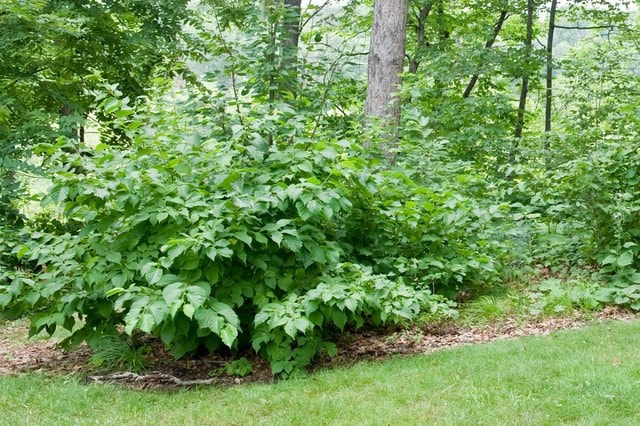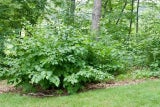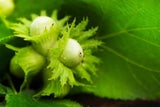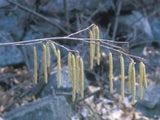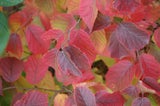- 2024 Native Trees
- >
- Native Trees
- >
- American Hazelnut (Corylus americana)
American Hazelnut (Corylus americana)
Height: 10 to 16 feet
Spread: 8 to 12 feet
Bloom Time: March to April
Bloom Description: Red (Female) Brown (Male) – On same plant
Sun: Full sun to part shade
Suggested Use: Naturalized areas or hedge
Tolerate: Black Walnut and Clay Soils
Native to: Jefferson County
A small tree to large shrub the American Hazelnut is generally an overlooked native plant, yet it is quite special for its wildlife value and the fantastic texture it brings to the landscape with its long catkins in the spring and thick dark green leaves.
The nuts from the American Hazelnut are smaller than that of the European Hazelnut (Corylus avellana) which is why the latter is the one grown for the commercial food market. However, it is often stated that the flavor of the American Hazelnut is far superior to that of the European counterpart.
The American Hazelnut will adapt to a wide variety of conditions and is quite hardy. The tree is monoecious meaning that both male and female flowers appear on the same plant, and the male catkins are quite showy. The early spring flowers yield to the familiar nut which matures around July to August. Nuts are encased in a ragged-edge leafy bract hull. Nuts can be roasted and consumed or ground into a flour; however, squirrels and birds often consume the hazelnuts before here is a chance to harvest.
George Washington was a fan of the American Hazelnut and personally planted several seeds of the species at his Mount Vernon estate that his sister, Betty Lewis gave him. Thomas Jefferson experimented with the plant at Monticello both for its aesthetic value and nut production.
The American Hazelnut is perhaps best used in the landscape as for its value to the overall ecosystem. The value to wildlife cannot be overstated. The plant serves as a host plant for over 118 species of butterflies and moths. Many other insects feed on the leaves, nuts, and other parts of American hazelnut such as the amazing walking stick bug. The nuts are eaten by such birds as the bobwhite quail, wild turkey, ruffed grouse, red-bellied woodpecker, and blue jay. The male catkins and buds of American hazelnut are an important source of food during the winter for the ruffed grouse and wild turkey. Chipmunks and squirrels go crazy for the nuts. White-tailed deer and cottontail rabbits browse on the twigs and leaves. When this shrub grows near water, beavers use the stems as a source of food and in the construction of their lodges and dams. Because American hazelnut has a dense branching structure and large leaves, it provides excellent cover for various kinds of wildlife and ideal nesting habitat for many songbirds.■

